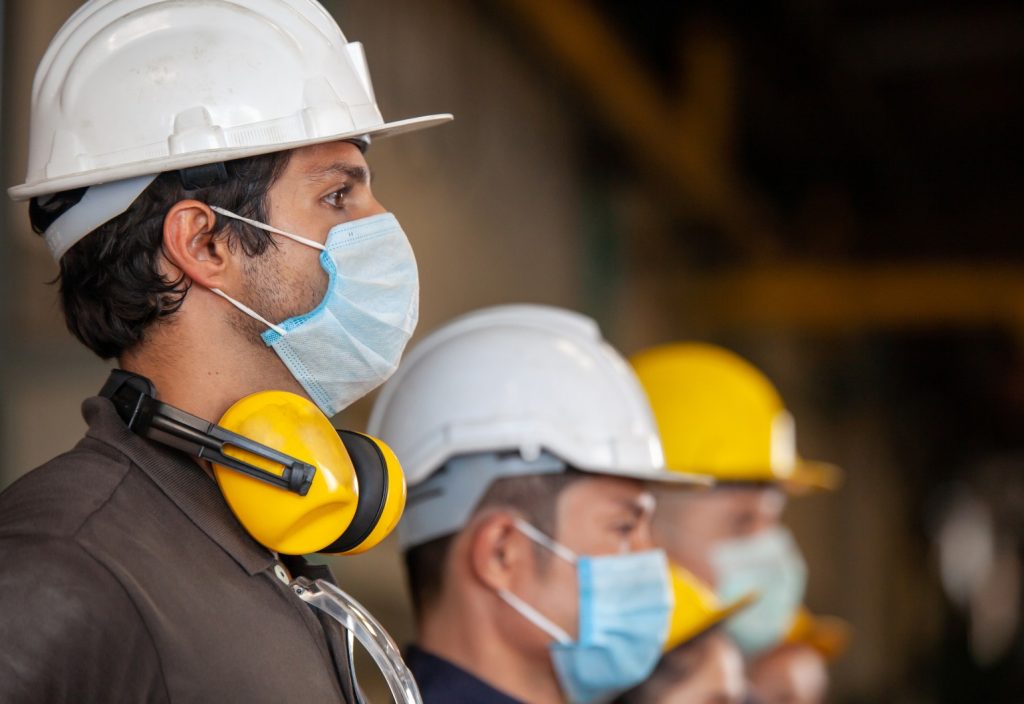For some, COVID-19 restrictions meant working from home. But for those who still needed to attend a physical workplace, employers turned to technology to create safer environments.
World Day for Safety and Health in the Workplace (28 April) was recognised in the shadow of COVID-19 this year.
The pandemic touched nearly every workplace on the planet and many are still experiencing its impacts. While much of the corporate world turned to working from home, those in industries like construction and manufacturing had little choice but to find ways to adapt to the situation.
The people developing workplace health and safety (WHS) technology didn’t waste any time creating solutions to these brand new problems.
Here are three ways WHS technology changed in response to the COVID-19 pandemic.
1. Safety dashboards
Originally developed to help organisations measure and mitigate workplace accidents, Hexagon’s Situational Awareness solution became a whole lot more important in 2020.
The Situational Awareness solution is a dashboard that allows organisations to combine their operations and maintenance data into one location. It can also incorporate external data like CCTV footage or weather information to assist in safety monitoring, and can track employee locations on a 3D map.
Rachel Yee, Manager and Industry Consultant at Hexagon, told create that during the pandemic, the ability to track the location of employees became essential for many employers to ensure social distancing and to assist with contact tracing should an employee test positive for COVID-19.
“The map allows you to set up safety zones so you can see, ‘this is the area that has been impacted’ or ‘this employee talked to this person, they need to be contacted,’” Yee said.
“You can also add your sanitation schedule to the dashboard so you know which areas have been disinfected.”
The aim of the Situational Awareness solution is to help employees make informed decisions about WHS. The dashboard keeps track of incidents but also near-misses, meaning it could potentially stop an accident happening in the future.
Yee said the next step in developing the technology is to reduce the potential for human error by building out its automation ability.
“I think COVID-19 sped up digital transformation for a lot of organisations,” Yee said, “and I think that’s going to make workplaces safer because they have all the data they need at their fingertips.”
2. Smarter buildings
Prior to the pandemic, many workplace managers wouldn’t have thought twice about their building’s air quality. But with concern about the spread of COVID-19, ensuring workplaces had adequate air circulation became a necessity.
This is where technology like Arup Neuron really shines.
Neuron uses AI and machine learning to analyse important environmental metrics in a building. This data can be used to make decisions about things like the building’s energy usage but also the health of those in it.
After measuring things including humidity, air pathogens and air quality, Neuron can make adjustments, such as allowing in more UV light, increasing ventilation or using air purification to improve the air quality as needed.
In response to the novel coronavirus, thermal imaging was incorporated into the technology. This allows workplaces to set up a camera that measures the temperatures of people entering the building.
Rather than individual temperature checking, Neuron uses AI to detect human faces and scan their forehead temperature. If an operator notices someone registering an elevated temperature, the person can be sent for further scanning by an employee with a handheld temperature scanner.
The technology can measure someone’s average temperature in less than one second, making it a quick, non-invasive way to monitor employees’ health without slowing them down.
Like the Situational Awareness solution, Neuron provides users with plenty of data to make informed decisions about the safety of those within the building. As these technologies become smarter, they’re only going to be able to gather more data and potentially lead to healthier workforces.
3. Virtual reality training
The popularity of training by virtual reality (VR) was increasing prior to 2020, but with the pandemic making much hands-on experience impossible, workplaces truly began to see it’s potential.
When it comes to WHS training, VR allows employees to experience situations they otherwise wouldn’t have been able to.
Australian firm Next World Enterprises offers VR training across the country. Last year it worked with Burke Shire Council in remote Queensland. It claims employees learned on average 67 per cent more than training with traditional learning methods.
With VR, Next World Enterprises can train employees in a number of WHS areas like confined space entry, working at heights and manual handling.
Next World Enterprises CEO Michael O’Reilly said VR training will one day overtake e-learning.
“E-learning has no place in a modern and performance-based workplace [learning and development] strategy, the future of learning has been brought forward with VR,” O’Reilly said.
